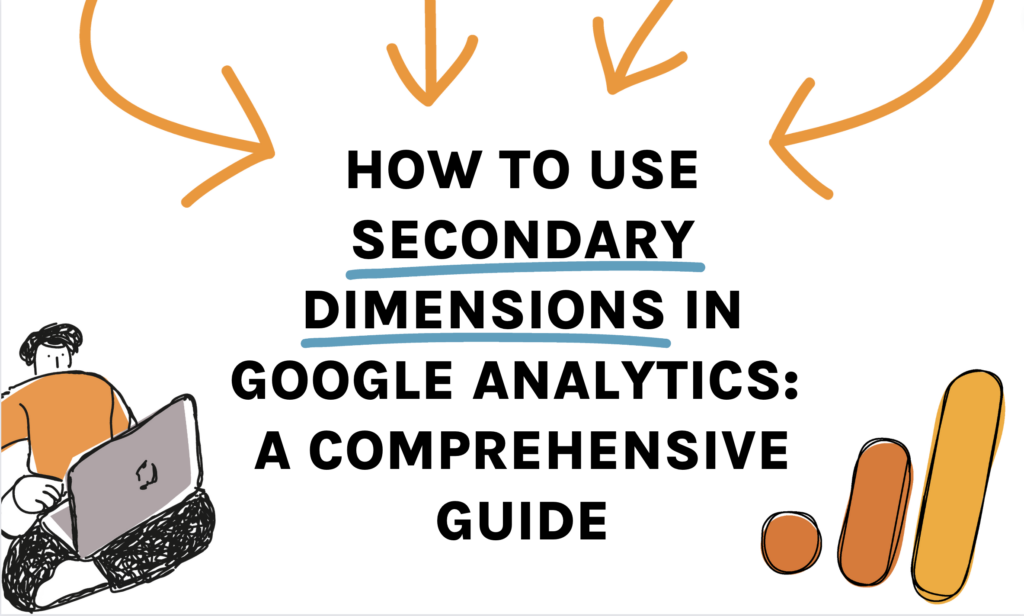Enhance Your Reporting with Secondary Dimension in Google Analytics
Enhance Your Reporting with Secondary Dimension in Google Analytics
Blog Article
Unlock Deeper Insights With Second Measurement in Google Analytics
With the large area of data available in Google Analytics, the use of second dimensions can substantially enhance your analytical abilities. By tactically incorporating second measurements right into your evaluation, you can uncover useful understandings that may otherwise remain undiscovered - Secondary Dimension in Google Analytics.
Understanding Main Vs. Secondary Dimensions
When evaluating information in Google Analytics, it is vital to identify between primary and second measurements to obtain much deeper insights into user habits. Key dimensions are the major groups whereby you can view your information, such as source/medium, device, or touchdown page. These dimensions supply the basic framework for organizing and comprehending your data. On the various other hand, secondary dimensions enable you to additional study your key dimension data. By adding a second measurement, you can layer on added info to your key measurement, making it possible for a much more granular analysis. If your primary dimension is the source/medium with which customers arrived on your site, including a second measurement like geographical area can reveal where those individuals are situated geographically. When looking at the main dimension alone, this added layer of details can aid you determine fads, patterns, or anomalies that might not have been noticeable. Leveraging both secondary and main dimensions in Google Analytics is important for extensive data evaluation and informed decision-making.
Making Use Of Second Dimensions Effectively
Properly utilizing additional measurements in Google Analytics enhances the depth and granularity of data evaluation, providing beneficial insights right into user behavior and patterns. By integrating secondary measurements along with key dimensions, marketers and analysts can dig deeper right into the specifics of individual communications on their web sites. Second measurements enable users to section and filter key dimension data better, providing a much more in-depth sight of individual demographics, habits, and communications. This can be specifically valuable when trying to comprehend the effect of details variables on individual involvement, such as the web browsers or tools they are utilizing, the resources of their website traffic, or their geographic locations.
Additionally, second measurements enable users to compare and contrast various information factors within a solitary report, helping with a much more extensive analysis of individual actions patterns. By leveraging secondary measurements efficiently, companies can uncover surprise understandings, enhance their marketing methods, and enhance the general customer experience on their sites.
Checking Out Usual Secondary Measurement Mixes
To further examine individual actions and trends in Google Analytics, it is important to check out common mixes of second dimensions. Some common secondary measurement combinations that provide beneficial understandings consist of analyzing web traffic resources with customer areas to recognize where website site visitors are coming from geographically and just how they discovered the website. Analyzing individual actions metrics with second measurements such as rate of interests or demographics can aid in targeting particular audience sectors extra efficiently.
Using Secondary Measurement in Customized News
Using secondary measurements in custom-made reports enables a much more detailed evaluation of data in Google Analytics, improving the depth of understandings gotten. When developing custom-made records in Google Analytics, including additional measurements can supply an extra detailed view of exactly how various dimensions connect with each various other. This attribute makes it possible for customers to delve much deeper into their data and discover important correlations that may not be right away noticeable.
By applying second dimensions in customized records, individuals can gain a far better understanding of their internet site or app website traffic. Integrating the main dimension of "source/medium" with the secondary dimension of "landing page" can disclose which landing web pages are carrying out best for web traffic coming from specific sources. This understanding can help online why not look here marketers maximize their projects and enhance overall conversion rates.

Enhancing Information Visualization With Second Measurement
When checking out data in Google Analytics personalized records, incorporating secondary dimensions not just gives a much more detailed evaluation but browse around this web-site additionally improves the visual representation of insights through data visualization. By adding a secondary measurement to your reports, you can improve the means information exists, making it less complicated to identify patterns, trends, and relationships within your internet site's efficiency metrics.
Additional measurements can help you segment your information even more, allowing for a much deeper understanding of user habits and communications on your site. When attempting to separate details variables that might impact your internet site's efficiency., this improved degree of granularity can be especially valuable.

Conclusion
In conclusion, leveraging secondary measurements in Google Analytics enables a much more detailed evaluation of data, resulting in much deeper insights and even more enlightened decision-making. Secondary Dimension in Google Analytics. By including added layers of details to key information sets, marketing experts and analysts can reveal hidden fads, patterns, and relationships that supply a granular sight of customer behavior and interactions. This boosted level of insight makes it possible for optimization of campaigns and tailored strategies for particular audience sections, ultimately enhancing efficiency and conversion prices
On the various other hand, secondary measurements permit you to more explore your key measurement data. By including an additional dimension, you can layer on additional info to your key measurement, making it possible for a much more granular evaluation. If your key dimension is the source/medium via which users showed up on your visit this web-site website, adding a second measurement like geographical area can reveal where those customers are situated geographically. By integrating secondary dimensions alongside main measurements, online marketers and experts can dive deeper right into the specifics of user communications on their web sites. Secondary dimensions enable individuals to section and filter key measurement information further, providing a much more in-depth view of individual communications, demographics, and habits.
Report this page